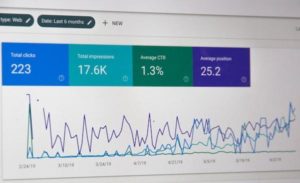
As businesses increasingly rely on data to inform their decisions, it is more important than ever to ensure that this data is of high quality. Poor data quality can lead to incorrect insights and suboptimal decision-making, ultimately impacting business performance. Keep reading to learn more about the impact of data quality on business performance.
What is data quality?

Data quality significantly impacts decision-making, business performance, and the overall success of an organization. It is essential to understand the importance of data quality and the factors that affect it to ensure data quality. Data quality is the accuracy, completeness, and timeliness of data. The accuracy of data is the degree to which it reflects the actual state of affairs. To ensure accuracy, data must be clean and free of errors. The completeness of data includes all the relevant information to the task at hand.
To ensure completeness, data must be comprehensive and have all necessary information. The timeliness of data is the degree to which it is up-to-date. To guarantee the timeliness, data must be current and reflect the most recent changes in the real world.
What are the signs of bad data quality?

There are many signs that data may be of poor quality. Some of the most common include inconsistent, invalid, out-of-date, duplicate, and incorrect data. Inconsistent data happens when data is entered inconsistently into different systems or updated manually without following a consistent process. For example, a customer’s name might be spelled differently in other systems, or the same customer’s age might be entered as both 27 and 28. Invalid data occurs by incorrect input or by corrupted data. For example, if someone incorrectly entered a product’s price as $1,000,000.
Out-of-date data is data not updated regularly or archived data that is no longer accurate. For example, a customer’s contact information might be accurate as of last month but not accurate anymore. Duplicate data occurs when data has been copied and pasted multiple times or by various entries of the same data. For example, a customer’s name might be entered into the system twice, with two different addresses.
Incorrect data results from entering inaccurate or mistranslated data. For example, a customer’s name might be incorrectly entered as “John” when spelled correctly as “Johnathan.”
How can you improve the data quality?
There are many ways that you can improve data quality in your organization. One of the most important ways is to ensure that you have a data quality management plan. A data quality management plan is essential to any successful data management strategy. The plan outlines the steps guaranteeing the quality of the data, from collection to data analysis and interpretation. The first step in creating a data quality management plan is establishing specific quality criteria for the data.
These achievable and measurable criteria must include the needs of the organization and the goals of the data management strategy. Once the requirements are complete, the next step is to develop a process for ensuring that the data meets the standards. This process should include data collection, cleaning, verification, and validation. The final step is to implement the plan and track the results. Regular planning and tracking of the results are required to ensure that the data quality remains high.
Another important way to improve data quality is to ensure that your data is clean and accurate. This means removing duplicate data, correcting errors, and standardizing data formats. You can also improve data quality by ensuring that your data is current and relevant. This means keeping your data up-to-date and deleting outdated data. Finally, you can enhance data quality by using data governance processes and tools. These processes and tools can help you to manage and monitor your data, identify and correct data quality issues, and ensure that your data meets your organization’s standards.



